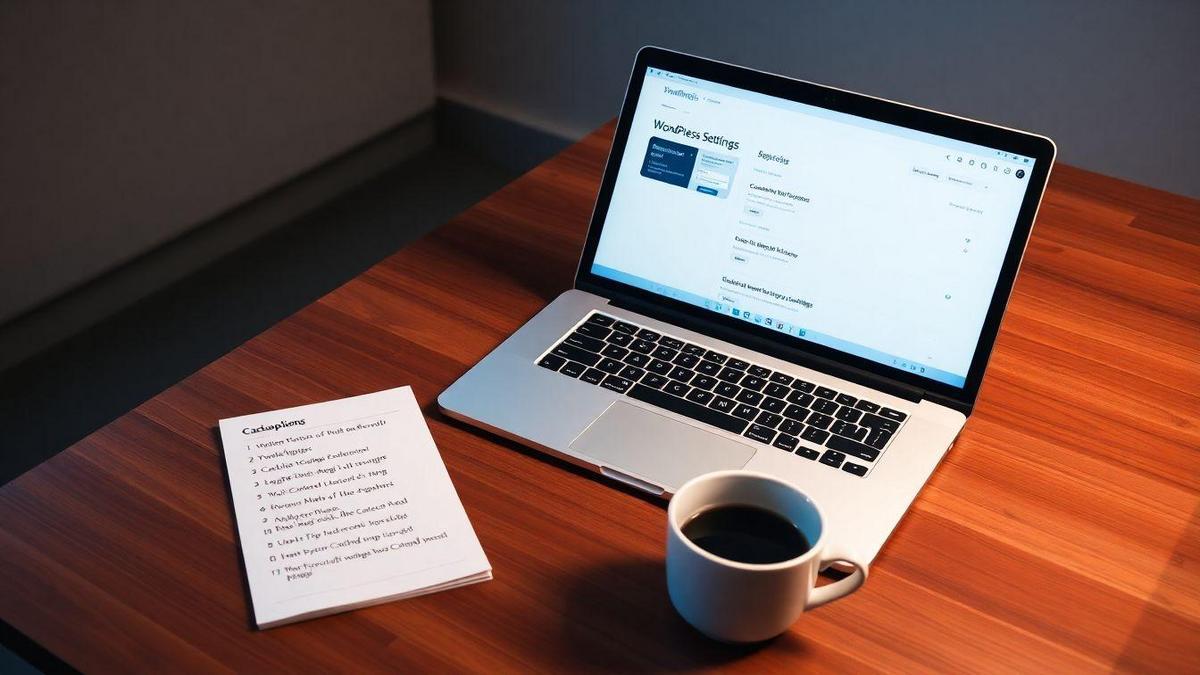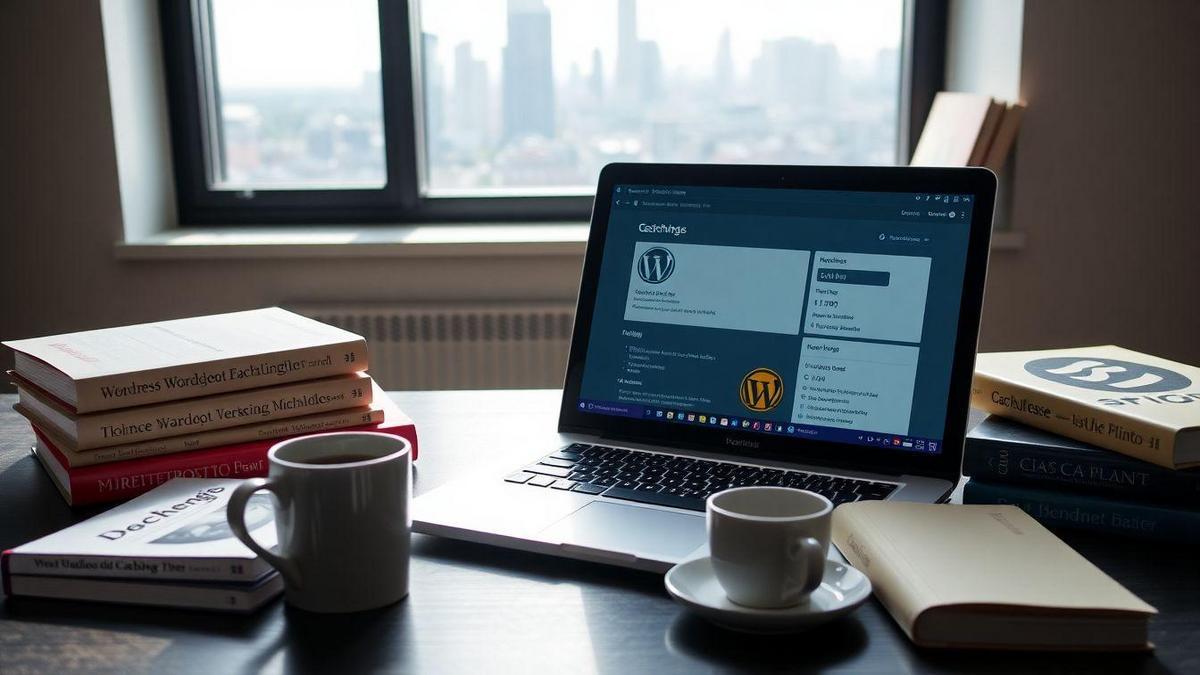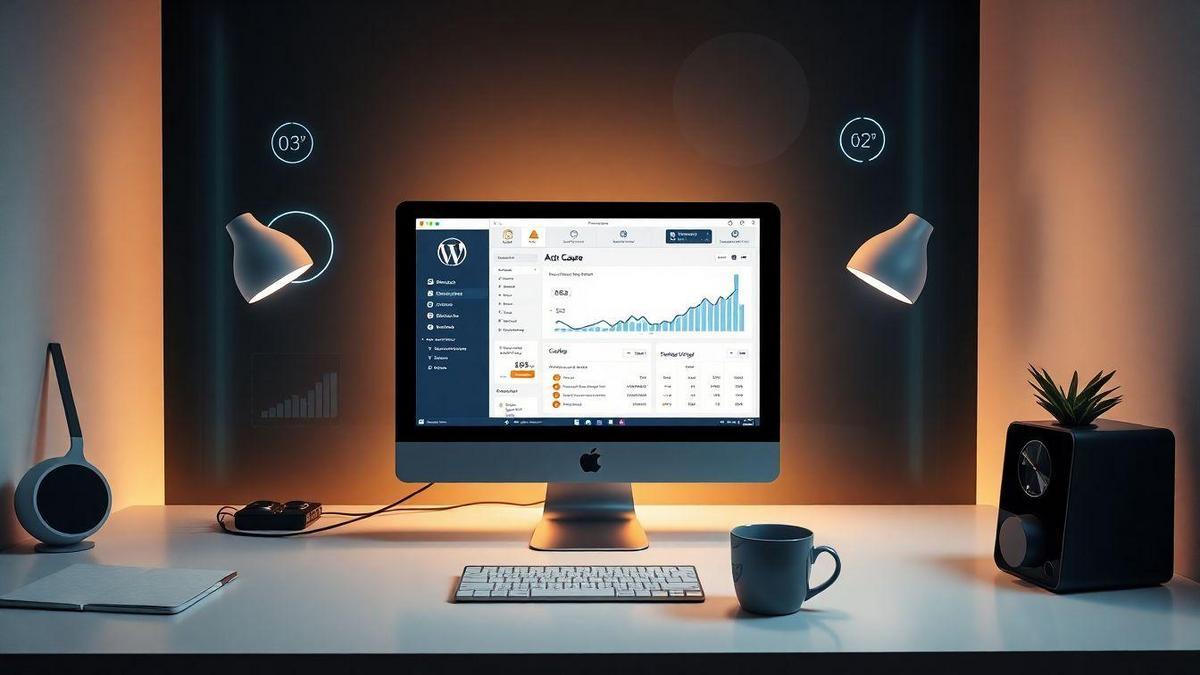If you’re diving into the Best Caching Plugins to Speed Up Your WordPress Site, you’re in for a treat! Caching is a game-changer for website speed and user experience. It helps your site load faster, keeping visitors happy and engaged. In this article, we’ll take you through what caching is, why it’s super important, and how to choose the right plugin for your needs. Whether you’re a beginner or a pro, you’ll find tips and tricks to make your site zoom! Get ready to unlock the power of caching!

Understanding Caching and Its Importance
What is Caching?
Caching is like a shortcut for your website. It saves copies of your web pages so they load faster when someone visits. Instead of pulling all the information from the server every time, caching allows your site to serve up those saved copies quickly. This means visitors spend less time waiting and more time enjoying your content.
Why Caching Matters for Your Site
When you think about your website, consider how much you want your visitors to stick around. If your site is slow, they might leave before they even see what you have to offer. Caching helps speed things up, which is crucial for keeping visitors engaged. Here are a few reasons why caching is essential:
- Faster Load Times: Caching makes your site load quicker, which is key in today’s fast-paced world.
- Better User Experience: When pages load fast, visitors are happier and more likely to return.
- Reduced Server Load: Caching decreases the amount of work your server has to do, which can save you money on hosting.
Benefits of Caching for WordPress
When you use caching on your WordPress site, you unlock some serious benefits. Here’s a quick look:
| Benefit | Description |
|---|---|
| Improved Performance | Your site runs smoother and faster. |
| Higher Search Rankings | Search engines favor sites that load quickly. |
| Increased Conversions | Faster sites lead to more sales and sign-ups. |
By using the Best Caching Plugins to Speed Up Your WordPress Site, you can take advantage of these benefits and make your site shine.
Top Features to Look for in Caching Plugins
Essential Features for Speed Optimization
When you’re looking to speed up your WordPress site, caching plugins can be a game changer. Here are some key features that you should keep an eye on:
- Page Caching: This feature saves static versions of your pages, so your server doesn’t have to generate them every time someone visits. Think of it as having your favorite meal prepped and ready to go, rather than cooking from scratch each time.
- Browser Caching: This allows your visitors’ browsers to store certain elements of your site. When they return, they don’t have to download everything again. It’s like having your favorite book on your shelf rather than borrowing it from the library every time.
- Minification: This process reduces file sizes by removing unnecessary spaces and comments in your code. It’s like packing your suitcase efficiently for a trip—less clutter means more room for what really matters.
User-Friendly Interfaces in Caching Plugins
You don’t want to wrestle with a confusing interface while trying to optimize your site. A user-friendly interface is essential. Here’s what to look for:
- Simple Setup: The best caching plugins should have a straightforward setup process. You want to be able to get things running quickly without needing a degree in rocket science.
- Clear Options: A plugin that clearly labels its features makes it easier for you to understand what each option does. Imagine trying to read a map that’s all jumbled up—frustrating, right?
- Helpful Documentation: Good plugins come with guides or tutorials. This is like having a friendly tour guide when exploring a new city, helping you find your way.
Comparing Features of the Best Caching Plugins to Speed Up Your WordPress Site
To help you make the best choice, here’s a quick comparison table of popular caching plugins:
| Plugin Name | Page Caching | Browser Caching | Minification | User-Friendly Interface |
|---|---|---|---|---|
| WP Super Cache | Yes | Yes | Yes | Yes |
| W3 Total Cache | Yes | Yes | Yes | Moderate |
| WP Rocket | Yes | Yes | Yes | Excellent |
| Cache Enabler | Yes | Yes | No | Good |
These plugins can significantly speed up your WordPress site. It’s like having a fast car versus a bicycle—you’ll get to your destination much quicker!

The Best Caching Plugins for WordPress
Overview of Popular Caching Plugins
When you’re looking to speed up your WordPress site, caching plugins are your best friends. They save static versions of your pages, so your visitors don’t have to wait for everything to load each time. Here are a few popular options:
| Plugin Name | Description |
|---|---|
| WP Super Cache | Simple to use and great for beginners. |
| W3 Total Cache | Offers a lot of features for advanced users. |
| WP Rocket | User-friendly with powerful features, but it’s paid. |
| Cache Enabler | Lightweight and easy to set up. |
| Comet Cache | Good for both beginners and advanced users. |
Unique Benefits of Each Plugin
Each of these plugins has something special to offer. Here’s a quick look:
- WP Super Cache: It’s like a trusty old friend. Easy to set up, making it perfect for those just starting out.
- W3 Total Cache: This plugin is a powerhouse. It gives you tons of options to tweak and optimize.
- WP Rocket: While it costs money, it’s worth it for the simplicity and effectiveness. You’ll feel like a pro without any hassle!
- Cache Enabler: Lightweight and quick, it’s great if you want something that won’t weigh down your site.
- Comet Cache: This one strikes a balance. It’s user-friendly but still offers advanced features for those who want to dive deeper.
Choosing the Right Plugin for Your Needs
Picking the right caching plugin can feel like a maze, but it doesn’t have to be. Here are a few tips to help you decide:
- Skill Level: If you’re just starting, go for something simple like WP Super Cache.
- Features: If you want more control, W3 Total Cache might be your best bet.
- Budget: If you don’t mind spending a little, WP Rocket offers great value.
- Site Type: Consider what you’re running. A blog might need less than an e-commerce site.
How Caching Plugins Improve Website Speed
Reducing Load Times with Caching
Caching plugins are like a magic wand for your website. They help your site load faster by storing copies of your pages. When someone visits, instead of fetching everything from scratch, the plugin serves a saved version. This means quicker load times!
Think of it like a library. Instead of going to the back room to find a book every time, you have a copy right at the front desk. This saves time and makes everything run smoother.
Impact of Caching on User Experience
When your website loads fast, users stick around. No one likes waiting for a page to load. A slow site can make visitors leave faster than a rabbit in a race!
Here’s how caching improves the experience:
- Less Waiting: Users get what they want quickly.
- More Visits: Fast sites attract more visitors.
- Better Rankings: Search engines love speedy sites, which can boost your visibility.
Real-World Speed Improvements from Caching Plugins
Let’s look at some numbers. Here’s a simple table to show how caching can change the game:
| Before Caching | After Caching |
|---|---|
| Load Time: 5 seconds | Load Time: 1 second |
| Bounce Rate: 50% | Bounce Rate: 20% |
| Page Views: 100 | Page Views: 300 |
As you can see, caching can transform your website’s performance. A faster site means happier users and more engagement.

Setting Up Your Caching Plugin
Step-by-Step Installation Guide
Getting your caching plugin up and running is easier than pie! Here’s a simple guide to help you through the process:
- Choose Your Plugin: Pick one of the best caching plugins to speed up your WordPress site. Popular options include WP Super Cache, W3 Total Cache, and WP Rocket.
- Install the Plugin:
- Go to your WordPress dashboard.
- Click on Plugins > Add New.
- Search for your chosen plugin.
- Click Install Now, then Activate.
- Check for Compatibility: Make sure your plugin plays nice with your theme and other plugins. Sometimes, things can get a little messy if they don’t work together.
- Set Up Basic Options: Most plugins will guide you through the initial setup. Just follow the prompts, and you’ll be set in no time!
Configuring Settings for Optimal Performance
Now that your caching plugin is installed, let’s get it fine-tuned for top-notch performance. Here’s how:
- Enable Caching: Look for an option that says Enable Caching or something similar. This is where the magic happens!
- Choose Cache Method: Some plugins let you choose between different caching methods. If you’re unsure, the default option usually does the trick.
- Set Cache Expiration: Decide how long you want the cache to be stored. A good rule of thumb is to set it between 1 to 24 hours.
- Optimize Database: Many caching plugins offer a feature to clean up your database. This helps keep your site running smoothly.
- Test Your Site: After making changes, always check how your site performs. Use tools like Google PageSpeed Insights or GTmetrix to see if you’re hitting those speed goals!
Common Setup Mistakes to Avoid
Setting up a caching plugin can be a breeze, but there are a few common pitfalls to watch out for:
- Not Clearing Cache After Changes: If you make updates to your site, remember to clear the cache. Otherwise, visitors might see outdated content.
- Over-Optimizing: It’s tempting to check all the boxes, but too much optimization can break your site. Start with basic settings and adjust as needed.
- Ignoring Compatibility Issues: If you notice problems after installation, check if your plugin is compatible with your theme and other plugins.
- Skipping Testing: Always test your site after making changes. If something goes wrong, you’ll want to know right away!
| Mistake | Solution |
|---|---|
| Not clearing cache | Clear cache after updates |
| Over-optimizing | Start with basic settings |
| Ignoring compatibility issues | Check compatibility before installing |
| Skipping testing | Always run tests after changes |
Comparing Caching Plugins: Which is Best for You?
Performance Metrics to Consider
When picking a caching plugin, you want to look at some key performance metrics. These numbers can help you figure out which plugin will make your WordPress site faster. Here are some important metrics to keep in mind:
| Metric | What It Means |
|---|---|
| Load Time | How long it takes for your page to show up. |
| Page Size | The total size of your webpage in kilobytes. |
| Requests | The number of files your site needs to load. |
| Server Response Time | How quickly your server responds to requests. |
These metrics can give you a clear picture of how well a caching plugin performs. A good plugin should help lower your load time and page size while cutting down on requests.
User Reviews and Feedback
Don’t just take the plugin’s word for it. User reviews can be a goldmine of information. Check out what other people say about their experiences. Look for comments on:
- Ease of Use: Is it simple to set up and manage?
- Support: Does the plugin offer good customer service?
- Effectiveness: Do users notice a real speed boost?
Reading through reviews can help you avoid plugins that sound great but might not deliver.
Making an Informed Choice on Caching Solutions
Now that you have some performance metrics and user feedback, it’s time to make your choice. Think about what you really need. Are you looking for something easy to set up? Or do you want advanced features?
Here’s a quick checklist to guide you:
- Identify Your Needs: What are your site goals?
- Compare Options: Look at different plugins side by side.
- Test Them Out: Many plugins offer free trials. Try them before you commit.
By following these steps, you can pick a caching plugin that’s just right for your needs, helping you find the Best Caching Plugins to Speed Up Your WordPress Site.

Advanced Caching Techniques for WordPress
Utilizing Object Caching for Better Performance
When you’re looking to boost your WordPress site’s speed, object caching is a game changer. Think of it like having a super-efficient assistant who remembers everything for you. Instead of fetching data from the database every single time, your site can quickly pull it from memory.
Here’s how it works:
- Faster Data Retrieval: Object caching stores your data in memory, which is way quicker than hitting the database.
- Less Server Load: By reducing the number of database queries, your server has more resources to handle other tasks.
- Easier Scaling: As your site grows, object caching helps maintain performance without needing a complete overhaul.
You can use plugins like Redis or Memcached to set this up. They act like a turbocharger for your database queries, making everything run smoother.
Combining Caching with Other Optimization Methods
Caching alone is great, but when you mix it with other optimization methods, you’re really cooking! Here’s a quick rundown of what you can do:
- Minification: Shrink your CSS, JavaScript, and HTML files. This reduces file size and speeds up loading.
- Image Optimization: Use plugins to compress images without losing quality. Smaller images load faster.
- Content Delivery Network (CDN): A CDN stores copies of your site on servers around the world, so users load your site from the nearest location.
By combining these methods with caching, you can create a speedy experience for your visitors.
| Optimization Method | Benefits |
|---|---|
| Caching | Fast data retrieval |
| Minification | Reduced file sizes |
| Image Optimization | Faster image loading |
| CDN | Quick access from anywhere |
Enhancing WordPress Loading Times with Advanced Techniques
Want to take your site’s loading times to the next level? Here are a few advanced techniques to consider:
- Lazy Loading: This means images and videos only load when they are in the viewport. It saves bandwidth and speeds up initial load times.
- Database Optimization: Regularly clean up your database to remove old revisions, spam comments, and unused plugins. A tidy database is a fast database!
- Heartbeat Control: Limit the frequency of WordPress’s heartbeat API to reduce server load. This can be especially helpful for sites with lots of users.
Implementing these techniques can lead to a noticeable difference in how quickly your site responds.
Troubleshooting Common Caching Issues
Identifying Problems with Your Caching Plugin
Sometimes, your caching plugin can act up, causing all sorts of headaches. You might notice your site loading slowly or not updating changes you’ve made. Here’s how to spot these issues:
- Site Loads Slowly: If your pages are taking longer than usual, it might be a caching problem.
- Changes Not Visible: Have you updated a post or changed a theme? If you can’t see those changes, caching could be the culprit.
- Error Messages: Any strange error messages popping up? That’s a red flag.
Solutions to Common Caching Errors
Now that you’ve identified the problems, let’s tackle some solutions. Here’s a handy table to guide you through:
| Problem | Solution |
|---|---|
| Site loads slowly | Clear your cache and try again. |
| Changes not visible | Purge the cache or adjust cache settings. |
| Error messages | Disable the plugin temporarily to troubleshoot. |
- Clear Cache: Most caching plugins have a clear cache option. Use it to refresh your site.
- Adjust Settings: Sometimes, tweaking settings can fix issues. Look for options related to cache expiration.
- Disable Plugins: If you suspect a plugin conflict, disable other plugins one at a time to find the troublemaker.
Keeping Your Site Running Smoothly with Caching
Keeping your site in tip-top shape is essential. Regularly clear your cache to avoid old data causing issues. This simple step can save you from a world of trouble.
Remember, caching plugins are designed to speed things up, but they need a little TLC too. If you’re using the Best Caching Plugins to Speed Up Your WordPress Site, stay on top of updates and settings to keep everything running smoothly.

The Future of Caching in WordPress
Emerging Trends in Caching Technology
As we look into the future of caching for WordPress, new trends are popping up that you should keep an eye on. First off, cloud-based caching is gaining traction. Instead of just relying on your server, this technology stores cached data across multiple servers. This means faster load times and less pressure on your own hosting.
Another trend is AI-driven caching. Imagine a system that learns from your site traffic and makes smart decisions about what to cache. This could mean better performance for your visitors and less work for you.
Here’s a quick table to summarize these trends:
| Trend | Description |
|---|---|
| Cloud-Based Caching | Caches data across multiple servers for speed. |
| AI-Driven Caching | Uses AI to optimize what data to cache. |
Predictions for WordPress Performance Optimization
Looking ahead, we can expect WordPress to focus even more on performance optimization. This means better integration with popular caching plugins. You might see features that automatically adjust caching settings based on your site’s needs.
Moreover, as more people use mobile devices, caching will need to adapt. Expect mobile-first caching solutions that cater specifically to those users. These changes will help keep your site speedy and user-friendly.
Staying Ahead with the Fastest WordPress Plugins
To stay ahead in the game, you’ll want to use the best caching plugins available. These plugins can significantly boost your site’s speed. Here are a few favorites:
- WP Rocket: Known for its user-friendly setup and great features.
- W3 Total Cache: Offers extensive options for advanced users.
- LiteSpeed Cache: Works wonders if you’re using LiteSpeed servers.
Using these plugins can make a real difference in how fast your site loads. Faster sites lead to happier visitors, and that’s what it’s all about!
Frequently Asked Questions
What are the Best Caching Plugins to Speed Up Your WordPress Site?
The best caching plugins include WP Super Cache, W3 Total Cache, and LiteSpeed Cache. They help make your site faster!
How do caching plugins help my website?
Caching plugins store a copy of your site. This means when someone visits, they get the saved version, making it faster!
Do caching plugins work with all WordPress themes?
Most caching plugins work with any WordPress theme. However, some plugins may have issues with specific themes or setups.
Will using more than one caching plugin speed up my site more?
No, using multiple caching plugins can create problems. Stick to one! This is the best way to keep your site running smoothly.
Can I change caching settings easily?
Yes! You can easily change caching settings in your plugin’s dashboard. Just click around, and you will find the options!

Lucas is a technical SEO expert who has optimized over 200 websites and managed Google AdSense and Ad Manager campaigns since 2016. At ReviewWebmaster.com, he shares strategies to boost organic traffic and monetize every single visit.
Types of articles he writes:
-
“How to Increase Your Blog’s RPM with Simple Tweaks”
-
“Technical SEO Checklist for WordPress Sites”
-
“Complete Beginner’s Guide to Google Ad Manager”
Why it works:
Lucas brings a confident, analytical, and performance-driven voice to the site — perfect for readers looking for actionable, results-oriented content.
